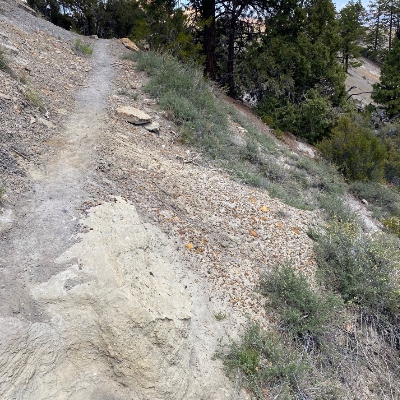Trail Etiquette
hiking
With the number of people who are trying to spend more time outside than inside, it is becoming more and more important to remember good trail etiquette. Having gone on outdoor excursions with my family for most of my life, I occasionally get into the mindset that these are "my trails". This possessive mindset is incorrect and one that I have to remedy at times. I am certain that I am not alone with these thoughts, if you have been on any trail several times, you begin to connect with it. That connection is important, but it also sadly leads many to believe that they own the area. Soon enough there may not be any "personal trails" so we must learn how to share the path and get along with each other.
I would say plan on meeting at least one other person/group on any hike you go on. If it is a listed hike in a National Park or Monument, expect many more. The question then is what is the appropriate way to interact with these others explorers? There is not one correct answer, but here are a few suggestions to keep in mind. If the trail is not congested with people, the best thing that I like to do is smile and extend a simple greeting such as "how are you" or "good afternoon. These short trail exchanges are a nice way to show that you are happy that others are enjoying the outdoors too. Passing others also gives you a good opportunity to ask about trail conditions, or how far you are from your destination. If the trail is crowded, greeting each person is not going to be reasonable. The best option in these circumstances is generally to stay out of people's way.
If the end destination of your trip is crowded, make sure not to hog whatever viewpoint or picture spots there may be. Oftentimes there will be a sort of unofficial line for these, so take your turn and allow others the same opportunity. This is what every other person is there for too, so remember to be considerate.
A good example, or perhaps a poor one depending on how you look at it, is the Angel's Landing hike in Zion National Park. Having worked right next to the park for a summer, I have first-hand experience with the crowds and traffic that are populating the area. Think of Disneyland crowds in a National Park and you'll have a good idea of what it is like. I hiked the trail in June with some friends and was amazed at how many people were in line to first get on the shuttle and then to get up to the viewpoint. There were people backed up for half a mile to the top! This hike in particular requires good etiquette because of the lines and exposure along the trail.
Another point to consider is what happens when there is a group that is going faster than you are? Do you step aside or try to pick up your pace? The most considerate option is to step aside. Chances are you will not be able to keep up a faster pace for very long if they were able to overtake you from the beginning. And what about if you run into a group coming the other way? If you are on a hill whoever is ascending gets the right of way. If a smaller group runs into a larger group, it is common practice for the smaller group to yield on the trail. Hikers yield to horses and bikers should allow everyone else the right of way.
Whenever nature calls (you need to relieve yourself), make sure to do your business away from the trails. As well, in many places, it is no longer legal to dig a cat hole when you need to go. Pack it in, pack it out is the standard in many places so make sure to take the equipment necessary for that. WAG bags are the most common choice for taking care of your waste and cost around $6 apiece. For those places where you can dig a hole, make sure that it is at least six inches deep and that you completely fill it in when you are finished. One of the biggest causes of banning cat holes is too many people not digging deep enough holes; this leads to little white flags poking out of the ground letting everyone know where you did your business.
Finally, stick to the trail! There are so many places where people wanted a "shortcut" and cut through a switchback or corner. This increases erosion and destroys the environment. Please be considerate of people, plants, and animals while traveling along, we all live in this world together. Watching where you step is especially important in desert environments because of the cryptobiotic soil crusts that are holding the fragile crust together. Cryptobiotic soil helps prevent erosion, conserves nutrients and water, and allows plants to survive. This soil takes around one hundred years to grow a centimeter so any damage to it can be devastating.
Get excited about enjoying the great outdoors, and remember to be considerate of everyone and everything during your adventures!
 Backcountry Basics
Backcountry Basics